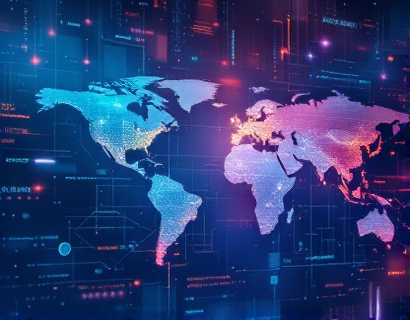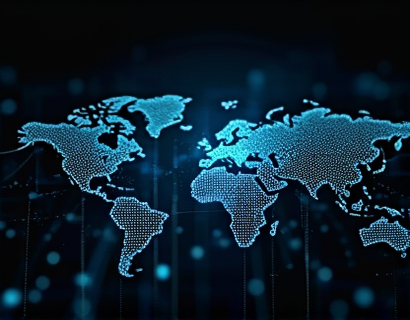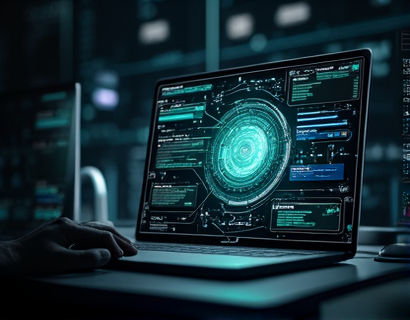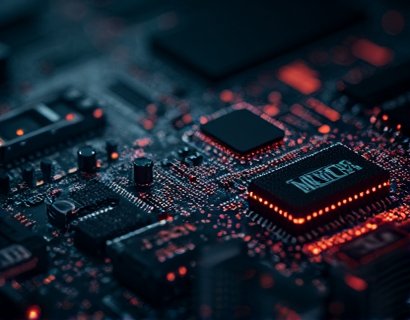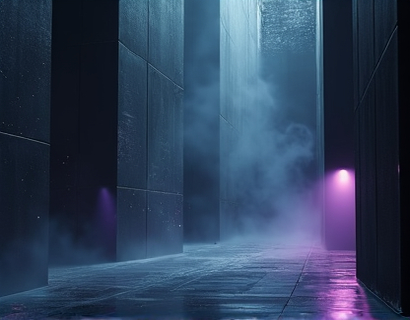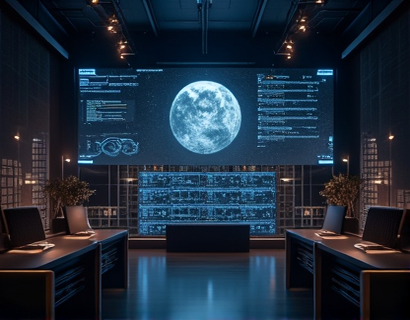Revolutionizing Online Memorial Creation with AI and Blockchain
The intersection of technology and grief has given rise to innovative solutions for creating and managing online memorials. In recent years, the integration of Artificial Intelligence (AI) and blockchain technology has transformed the way we honor our loved ones, offering secure, personalized, and meaningful tributes. This article delves into how these cutting-edge technologies are being harnessed to craft digital memorials that not only preserve memories but also ensure the integrity and privacy of the tributes created.
Understanding the Need for Digital Memorials
The loss of a loved one leaves an indelible mark on families and communities. In the digital age, the desire to remember and honor these individuals extends beyond traditional methods. Online memorials provide a virtual space where memories can be shared, stories told, and tributes created. However, the need for secure, personalized, and lasting solutions has become increasingly apparent. This is where the combination of AI and blockchain technology comes into play, offering a robust framework for creating and managing digital memorials.
AI in Memorial Creation
Artificial Intelligence has the capability to enhance the memorial creation process in several ways. AI algorithms can analyze and curate content, such as photos, videos, and written memories, to create a cohesive and personalized tribute. This technology can also assist in generating personalized messages, poems, or even music that resonate with the life and personality of the deceased. By learning from user interactions and preferences, AI can continuously refine and improve the memorial, ensuring it remains a living tribute that evolves over time.
Moreover, AI can help in managing the vast amount of data associated with a digital memorial. It can organize content chronologically, categorize memories by theme, and even suggest connections between different aspects of the deceased's life. This not only makes the memorial more user-friendly but also ensures that the tribute remains comprehensive and easy to navigate for visitors.
Blockchain for Security and Integrity
Blockchain technology, known for its role in cryptocurrencies, offers a decentralized and secure way to store and manage data. In the context of digital memorials, blockchain ensures that the content is immutable and tamper-proof. Once a memory or tribute is added to the blockchain, it cannot be altered or deleted, providing a permanent and secure record of the loved one's life.
The decentralized nature of blockchain also enhances privacy and control. Users have full ownership of their data, and they can choose who has access to the memorial. This is particularly important in a world where data breaches and unauthorized access are common concerns. Blockchain allows for granular permission settings, ensuring that only trusted individuals can view or contribute to the memorial.
Creating a Secure and Personalized Memorial
The combination of AI and blockchain creates a powerful platform for crafting secure and personalized online memorials. Here's how this synergy works in practice:
- Content Curation: AI algorithms curate and organize content, creating a structured and meaningful tribute. Users can input various media types, and AI will arrange them in a way that tells the story of the deceased's life.
- Personalized Messages: AI can generate personalized messages or poems based on the data available. These can be tailored to reflect the unique personality and relationships of the deceased.
- Data Security: Blockchain ensures that all content is stored securely and immutably. Each piece of data is encrypted and linked to the previous entry, forming a chain that is nearly impossible to break.
- Access Control: Users can set permissions for different sections of the memorial. For example, only immediate family members might have access to private memories, while friends and acquaintances can view more public tributes.
- Legacy Preservation: The blockchain-based system ensures that the memorial remains intact for future generations. Unlike traditional web-based solutions that can be lost or deleted, a blockchain-based memorial is preserved indefinitely.
Benefits of AI and Blockchain in Memorial Creation
The integration of AI and blockchain in digital memorial creation offers numerous benefits:
Firstly, security is paramount. The immutable nature of blockchain ensures that once a memory is added, it cannot be altered or deleted, providing a safe haven for cherished memories. Secondly, privacy is enhanced through granular access controls, allowing users to manage who can view or contribute to the memorial. Thirdly, personalization is taken to new heights with AI's ability to curate and generate content that truly reflects the life of the deceased. Lastly, legacy preservation is guaranteed, as the memorial is stored on a decentralized network that is resistant to data loss.
User Experience and Engagement
The user experience on a platform that combines AI and blockchain is designed to be intuitive and emotionally supportive. Here are some key features:
First, the interface is designed to be user-friendly, with clear steps for creating and managing the memorial. Users can easily upload media, add text, and set permissions without needing technical expertise.
Second, AI-driven suggestions help users discover and organize content in meaningful ways. For example, AI might suggest grouping photos from a particular event or creating a timeline of significant life moments.
Third, community features allow for shared memories and condolences. Users can leave messages, share stories, and support each other during the grieving process. These interactions are also stored on the blockchain, ensuring they are preserved and secure.
Fourth, reminders and notifications can be set up to mark important dates, such as birthdays or anniversaries, providing a way to keep the memory alive and relevant over time.
Case Studies and Real-World Applications
Several platforms and initiatives are already leveraging AI and blockchain to create innovative memorial solutions. For instance, some projects have used blockchain to create digital legacies that include not only memories but also digital assets like cryptocurrencies or online subscriptions, ensuring that the deceased's digital presence continues to have value.
Another example is the use of AI to generate virtual reality (VR) experiences based on the deceased's life. These VR environments can be accessed through blockchain-secured platforms, allowing family and friends to virtually visit places that were significant to the loved one, enhancing the emotional connection and sense of presence.
Challenges and Considerations
While the potential of AI and blockchain in memorial creation is vast, there are challenges and considerations to address:
First, technical complexity can be a barrier for some users. Ensuring that the platform is accessible and easy to use is crucial for widespread adoption. Second, regulatory compliance is essential, especially regarding data protection laws like GDPR. Third, cultural sensitivity must be considered, as different cultures have varying practices and expectations around mourning and memorialization.
Addressing these challenges requires a thoughtful and inclusive approach, involving input from users, technologists, and cultural experts to create a platform that is both innovative and respectful.
Conclusion
The integration of AI and blockchain in online memorial creation represents a significant advancement in how we honor and remember our loved ones. This technology not only provides a secure and personalized way to create tributes but also ensures that these memories are preserved for generations to come. As the field continues to evolve, we can expect even more innovative solutions that blend technology with the deep human need to remember and celebrate life.









